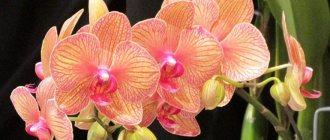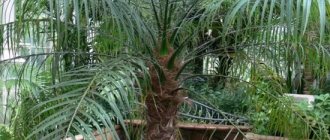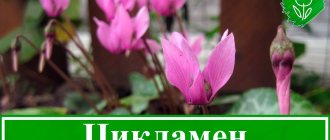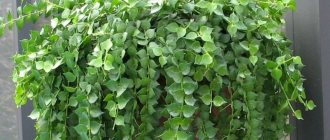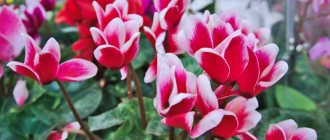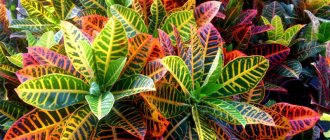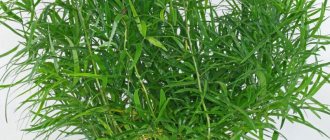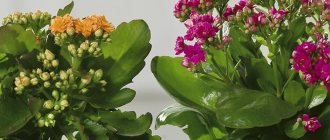Can you imagine a Christmas tree in reverse? Meanwhile, just such a plant can be grown right on your windowsill. In its homeland in Australia and South America, this tall coniferous tree with symmetrically arranged branches reaches a height of up to 75 meters. At home, only one species is grown - Araucaria variegata. You are unlikely to get flowers from this plant, but you will get marvelous decorative beauty. In addition, pine needles clean the air well.
Home care
Of course, it is difficult for a tropical guest to settle down in a separate apartment. But if you adhere to certain rules, everything should work out for you.
Location and lighting
The bright light of the araucaria is shown. But it is better to protect the plant from direct sunlight. It is advisable that the flowerpot be illuminated from both sides. If this is not possible, rotate it 90 degrees every week. Otherwise, you won’t get even growth of the branches.
In winter, the evergreen pet will have to be illuminated. Moreover, it is advisable to do this simultaneously from above and from the sides.
During the hot season, you can take the pot outside. Just choose the place carefully - partial shade, protected from rain.
Temperature
Heat is contraindicated for a coniferous friend. In summer it should not be more than +20°C. In winter, it is optimal to lower the temperature to +6-10°C. In any case, it should not be higher than +15C. You can take your unusual Christmas tree to the insulated loggia.
Watering
Araucaria should be watered abundantly. The soil in the tub should be constantly moist. Just make sure that the moisture does not stagnate. Under no circumstances allow the earthen ball to dry out. Always water with settled water. In winter, when temperatures are low, the intervals between waterings should be increased.
Air humidity
Give your Norfolk pine a moist environment. You will have to spray the needles twice a day, and in winter, keep them away from the battery. The water for the procedure should be warmed to room temperature and allowed to stand for 24 hours.
The soil
Araucaria can be planted in soil for coniferous crops. Or you can make your own soil mixture by mixing:
- 35% sand;
- 15% peat;
- 15% rotted leaves;
- 35% turf.
In such proportions, the soil will be loose and breathable, as we need.
Feeding and fertilizers
The Pacific guest needs spring and summer feeding. At this time, you should add a weak solution of mineral fertilizers with a low calcium content twice a month. Take special ones for coniferous plants or complex ones. Once a month it is advisable to feed with mullein infusion. After transplanting, do not fertilize until the tree begins to grow. You should also not do this in autumn and winter.
Transfer
Araucaria should not be replanted often, since tropical trees do not tolerate such a procedure well. Therefore, replant the tree for the first time when it has grown well. Do this no more than once every 3-4 years. Preferably in the spring.
Select a pot 3-4 cm larger than the previous one. Transfer the plant along with a lump of earth to a new place of residence, not forgetting to line the bottom of the pot with drainage. Be prepared that the Norfolk pine will get sick after transplanting. The lower branches may even dry out.
In between replantings, you can add soil from the forest to the flowerpot.
Trimming
Do not be afraid that the araucaria will reach too large a size. This only happens in living nature. And in the room it will stretch no more than one and a half meters. You can cut off the top only if you need to stop growth. In this case, the tree will stop growing and it can be taken from cuttings. If you want to grow a large, beautiful plant, you don’t need to prune it at all.
Bloom
You should not wait for your conifer to bloom. At home, araucaria almost never blooms.
The need for tying
Over time, the tree overgrows with large branches, so to avoid drooping, tie the branches so that they tend upward. When they are stretched in the desired direction, you can remove the garter.
You can do it differently. Place a stack of books or old magazines under the branches to secure them in position. This method will only work with young branches, but it will not help old ones to rise to the top.
Mr. Summer Resident informs: Araucaria - benefit or harm
The plant has powerful energy. It can awaken creativity and provoke people to be active. Moreover, the effect is both positive and negative. Araucaria enhances the energy in the house, no matter what it is. There is a sign that a plant in the house activates protective properties, gives peace and tranquility to those living in it.
The beneficial property of spruce is that it moisturizes and purifies the air. People with hypertension should not keep it in the house. And for those who have low blood pressure, on the contrary, it is necessary, but it cannot be placed in the rest room.
Reproduction
Araucaria propagates both by cuttings and seeds. But it is better to use the first method, since you are unlikely to be able to obtain seeds indoors.
Cuttings
When August arrives and until June next year, you can safely engage in cuttings. Select the apical shoots to get good, even seedlings. As a last resort, cut off the middle branches. But not the side ones, otherwise you will get an asymmetrical Christmas tree.
Do not cut the cuttings under any circumstances, otherwise the bud will not form. Tear it off, grabbing some of the main branch. Future sprouts should be half lignified. Keep them for 24 hours in a dark place. Remove the resinous juice, sprinkle with crushed coal.
Treat each tip with a root and stick it into a box with damp coarse river sand. Cover the top of the sprout with a cut plastic bottle. Place in a warm place with a temperature of +25 degrees. Moisten the sand every day, and spray the cuttings 3-4 times a day with cold water, removing the mini-greenhouse for a short time.
Be patient. Only after the New Year, and maybe even by March 8, callus will appear. Then replant it in soil for coniferous plants, mixing in the same amount of sand. Somewhere by May-June the cuttings will take root completely.
Transfer them, along with a lump of earth, into a pot with a layer of expanded clay, and add pine soil on top. Place a plastic bag over the top. Gradually accustom the sprout to air, removing the film a little every day. At the end of August, the first tier of branches should appear on young plants.
Seeds
If you can get fresh seeds, you can plant them. Each seed requires an individual container. Plant in a peat-sand mixture, adding a little charcoal. Water the soil mixture and cover with a layer of sphagnum, laying it out thinly. Keep at a temperature of +20 degrees.
It is unknown when the seeds will hatch. This could happen in two weeks, or maybe you have to wait two whole months. Notice that the roots have filled the pot; immediately transplant the seedling into a larger container.
How does it reproduce?
Araucaria is mainly propagated by cuttings, but you can try to grow a Christmas tree from seeds - however, this will take a lot of time and require some patience.
Cuttings
Cuttings, unlike planting seeds, are carried out in July, not in spring:
- for planting, young cuttings are taken from the tops of the crown,
- the cut cuttings are dried for about a day, then the lower part is cleaned of resin, wiped with ash or fine coal,
- cuttings are planted in a prepared mixture of sand and peat, well moistened, then they are covered with film (you can use a jar),
- seedlings must be watered, sprayed, film removed daily for ventilation and access to oxygen,
- Low temperatures should not be allowed during the rooting period - ideal for future Christmas trees is 25-26 degrees.
At the end of October, the cuttings will acquire an extensive root system and can be transplanted into separate pots.
Seeds
Germination and further survival of the seeds is poor. For planting, it is recommended to take fresh, just collected seeds. Even after storage for two to three weeks, sprouts may not appear, as the seeds will lose their viability:
- the seeds are sown in very moist soil and must be covered with a layer of moss on top, which is constantly moistened,
- the temperature in the room where the pot is located should not fall below 20 degrees and rise above 26,
- as soon as the seedlings hatch, they need to be removed from a sunny place,
- grown bushes are thinned out - leaving a distance of at least 10 cm between shoots, then each sprout is transplanted into a separate pot.
In the future, care for short plants is carried out in the same way as for adults.
Diseases and pests
Araucaria rarely gets sick, but parasites can also attack a coniferous plant. Eg:
- aphids (barely noticeable white droplets);
- pine loach;
- sawfly (larvae eat needles);
- moth moth;
- scale insects (microscopic brown tubercles);
- mealybug.
If you notice uncharacteristic powdery formations on the needles, remove them with a cotton swab moistened with alcohol. After this, treat the needles with a solution of laundry soap or any insecticide. At the same time, make sure that drops of the solution do not fall on the ground.
Care errors
Improper care of a coniferous mini-tree leads to various problems that need to be addressed urgently:
- The needles dry out and fall off - lack of moisture or too high air temperature.
- The lower branches fall off - stress from replanting, lack of light or too hot in the winter. In sufficiently mature plants, the trunk becomes bare naturally. So there is no need to sound the alarm about this.
- The needles turn pale, the branches droop - winter transplantation, lack of light, draft or hypothermia. It is unlikely that the plant will be saved.
- The tree has stopped growing - improper pruning of the top or an excess of calcium in the substrate.
- Sagging branches - excess moisture and excessive increase in air temperature.
- Shedding of needles and bending of the trunk - moving the tub with the tree to another place, causing the plant to become stressed.
Beautiful exotics
There are probably not many gardeners who do not like orchids. Beautiful exotics are increasingly appearing on our windowsills. The description of dendrobiums should begin with the mention that they are the most numerous representatives of the Orchid family. The plant's homeland is considered to be Indonesia, the Himalayas, Japan, China, New Zealand and Vietnam. Dendrobiums belong to epiphytic crops, as they most often grow on trees. However, there are some species that prefer rocks or ground. The very name of the flower in translation means “living on a tree,” which immediately speaks of its habitat.
Folk signs
It is advisable to place a pot of araucaria in the kitchen or dining room. Then she will bring holiday, satiety and prosperity to the house.
Experienced flower growers, contrary to the popular belief that conifers cannot be kept indoors, are inclined to think that the tree improves the health of family members by giving them activity.
Naturally, pine needles help purify indoor air, replenish the negative effects of electrical appliances and eliminate toxins.
Botanical description
About 14 species of plants of the genus Araucaria (lat. Araucaria) belong to the Araucariaceae family. The genus is native to South America and Australia. Representatives of the genus are coniferous plants with hard, needle-shaped leaves. Araucaria seeds can be eaten, and the wood is widely used in furniture making. In the Caucasus, along the Black Sea coast, some species are grown as ornamental. Growing araucaria in dry room air will lead to difficulties - this plant is more suitable for growing in greenhouses. If you do not follow the rules of care, the plant may get sick or even die. Not many coniferous plants can be grown at home - araucaria is one of them. Araucaria is an ornamental deciduous plant (since it is almost impossible to achieve flowering when grown indoors), which is grown in pots or in compositions in winter gardens. They say that the Araucaria plant purifies the air, like its other coniferous relatives.
Kinds
Types of Norfolk pine have certain differences in appearance:
- Cook's Araucaria (Araucaria columnaris) - branches form an almost right angle with the trunk. Towards the top the crown begins to expand. The bristly cones reach 10 cm.
- Variegated Araucaria or Indoor Spruce (Araucariaheterophylla) - grows only 60 cm in height. The branches are pyramidal in shape, the bark is flaky. The needles are small, growing in a spiral with an upward bend.
- Chilean Araucaria (Araucariaaraucana) - distinguished by thick, resinous bark with longitudinal cracks. The lower branches lying on the ground gradually fall off. Old ones tend to sag. The seeds of this species are used for food, and the wood is used in construction.
- Bidwill's Araucaria (Araucaria bidwillii) is perhaps the largest specimen in terms of height, length and width of leaves. And the cones that form are simply huge. It was with this species that the victorious march of Araucaria in Europe began.
If you decide to have this Pacific miracle at home, you will not regret your choice. The main thing is to give the coniferous tree everything it needs, and then you can admire the fresh greenery and breathe fresh air all year round.
Plant information
The plant belongs to the genus of evergreen coniferous trees from the Araucariaceae family. In nature, these are real giants, long-livers with a flat top.
Found fossilized cones of Araucaria confirm an age of about 220 million years. often called Chilean pine , the sacred Pehuen tree of the Mapuche Indian people, who eat the seeds from the cones as food.
Residents of Norfolk call the tree Norfold pine . They successfully sell seeds, supporting the economy. The coat of arms and flag of the island in the Pacific Ocean adorn its branches. In Europe, the tree has become famous since 1843.
It was brought by the English scientist Bidwill for the Royal Botanical Garden. Bidwill's Araucaria (Araucaria bidwillii) is considered the first plant species to conquer Europe. Several types of araucaria intended for growing at home have now been well studied.
